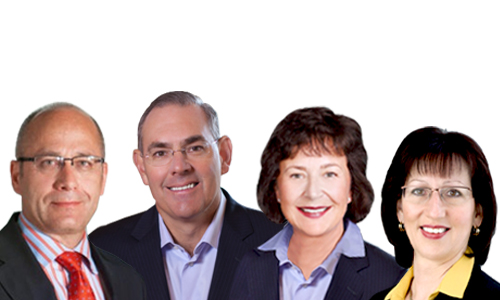By Erin McLaughlin
Toronto, Ontario — January 3, 2017 — Four insurers recently commented on what they anticipate will be major industry makers and breakers for the upcoming year. Rowan Saunders, President and CEO of Economical Insurance; Lynn Oldfield, President and CEO of AIG Canada; Sean Murphy, President of Lloyd’s Canada; and Heidi Sevcik, President and CEO of Gore Mutual Insurance Company discussed their expectations for 2018. Heavy on the minds of these insurers appear to be climate change and the heightened costs associated with natural disaster, as well as dealing with innovative and industry-changing technology.
Rising costs due to climate change
According to Saunders, along with “the continued deterioration and loss trends in automobile insurance,” the impacts of climate change will be the biggest trend to affect Canada’s property market this year. This means more vehicles damaged by storms, hurricanes, etc. will show up at the doors of autobody repair facilities. Most Canadian experts agree on the harsh reality of climate change, and that the affects of climate change will increase. Many insurers are no different. Saunders said, “The increasing frequency and severity of hail storms, tornadoes and water losses in some parts of the country is making it more challenging to provide coverage for those exposures. As an industry, we must underwrite and rate those exposures accordingly, which is not going to make us very popular.”
Oldfield’s take on the impact of climate change is similar to Saunders’. “This past year is shaping up to be the costliest year ever for insurance losses due to Hurricane Harvey, Irma, Maria, the earthquake in Mexico and the California wildfires.” Murphy went so far as to describe 2018 as “The aftermath of a historic year of natural catastrophes.” On the monetary consequences of increasingly frequent natural disasters, Oldfield stated, “In a globally connected economy, these losses matter to Canadians. Many industry leaders have already gone on to state that there will be broader implications on 2018 pricing.”
To reconcile with the associated challenges of climate change, Murphy suggests that insurance agencies (and presumably the rest of us) prepare and build resilience. He commented, “The insurance industry can make a significant contribution to resilience in cities by creating incentives for robust risk management and paying claims quickly following major disasters.” He added that local insurance markets can facilitate dialogue between governments, businesses and asset owners, and encourage stakeholders to “mitigate risk measures.” This, he said, will “Potentially reduce damage from natural catastrophes as well as the cost of insurance.” Sevcik’s statements also discussed the value in resistance-building, particularly among communities.
New technology, new risks
“Groundbreaking innovation such as big data, virtual reality, artificial intelligence and blockchain could help address some of the most pressing domestic and global risks,” commented Oldfield. She outlined some of the positive affects this may have for corporate Canada, including the ability to collect real time data using connected devices or the Internet of Things (IoT). Collision repair facilities may find tools such as these useful for determining the causes of crashes, and thus the kind of repair the vehicle needs. Oldfield added, “Innovation and disruptive technologies will enrich and enhance the tools of our trade for customer service, underwriting and claims adjudication.”
Despite these perks, there are real risks that we will begin to encounter in the introduction of new technology. On insurance companies roles in dealing with such risks, Oldfield commented: “The insurance industry will play a vital role to help our clients mitigate the risks associated with data, innovation and IoT.” She continued, “Insurers can lead by anticipating the risks associated with this latest technological revolution and fostering the dialogue necessary for all participants to understand the opportunities and the consequences.”Insurers can educate collision repair facilities on these risks, and how to avoid them.
Sevcik explored in her statement how technology will change consumer dynamics and expectations. “The broker’s role as a personal trusted advisor is still valuable, but technology has influenced the consumer desire for transparency, convenience, simplicity and customization in how they receive their products and services.” She continued, “An emerging omni-channel approach is forcing the industry to better understand modern customers. Data, information and analytics are instrumental in understanding customer preferences and satisfaction.” Sevcik argued that in doing this, industries will be able to better manage the “growing vulnerabilities” that stem from our increasingly technologically dependent lifestyles and societies.
Take away
It seems the underlying theme threading these issues together is one that the collision repair industry is already well acquainted with: change. Preparing for change, and strengthening resilience appears to be the best way to deal with this, from the perspective of these insurers.













































































